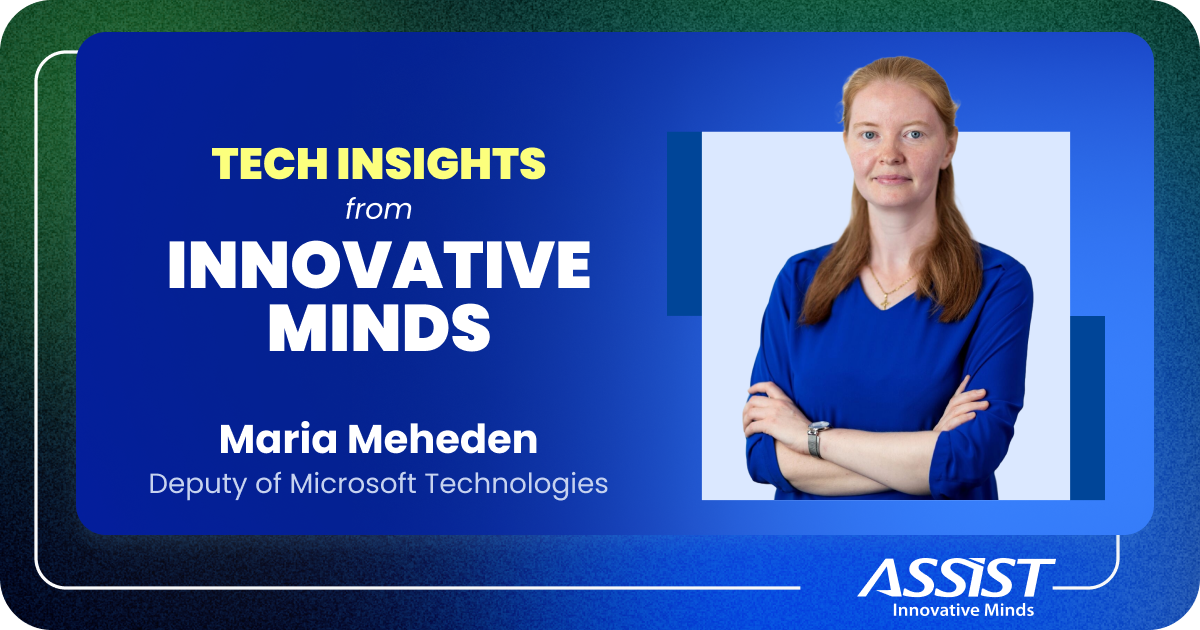Read time: 9 minutes
1. Introduction
In the second part of our series, we explored how Composable Architecture empowers developers to construct robust, adaptable software systems by breaking down applications into independently deployable components in front-end and back-end development. Building on this foundation, we now turn our focus to Composable Data Architecture, a critical element for ensuring the scalability, security, and efficiency of modern applications.
Composable Data Architecture integrates seamlessly with composable systems to effectively manage data across distributed environments. This approach enables the handling of complex, dynamic data workflows while adapting to the ever-evolving technological landscape. In this section, we'll delve into specific techniques and technologies that underpin this architectural style.
2. Composable Data Architecture
A Composable Data Architecture is pivotal in supporting the overall flexibility and scalability of applications. It focuses on ensuring data accessibility and integrity while maintaining the independence of different services. This chapter delves into effective strategies for building a decoupled and scalable data layer.
2.1 Database per Service
In a composable architecture, each microservice manages its own database or a suitably isolated subset of a larger database. This approach prevents database-level coupling between services, thereby supporting each microservice's encapsulation and independence.
Implementation Strategies:
- Database Technology Choice: Services may choose different types of databases—SQL for relational data requirements or NoSQL for schema-less data storage—based on their specific functionality. For example, a microservice handling user profiles might use an SQL database for structured query capabilities. In contrast, another person handling real-time user activity logs might opt for a NoSQL database because of its flexibility and scalability.
- Schema Management: Manage database schemas by establishing a version control system for database changes. Use migration scripts that align with each service release to modify the database schema without impacting running services. This approach ensures that any changes in the database schema are backward compatible and do not interfere with the operations of other microservices relying on the same database infrastructure.

2.2 Data Aggregation Techniques
Handling Data Across Services:
- API Composition: Use an API Gateway to orchestrate data from multiple services, ensuring a unified API response to clients. Implement this by configuring the API Gateway to route requests to the appropriate microservices and then aggregate the responses into a cohesive format before sending them back to the client. This not only simplifies client interactions but also abstracts the complexity of the underlying microservice architecture.
- Command Query Responsibility Segregation (CQRS): Implement CQRS to separate the read and write operations, enhancing system performance and scalability. This can be done by developing two distinct models: a command model that handles data updates and a query model that handles data retrieval. Use separate databases for each model if necessary to optimize performance—writes can go to a transactional database and reads can be optimized on a database built for speed and efficiency.
- Event Sourcing:
- Event Storage: Store state changes as a sequence of events in an event store, which acts as the authoritative source of truth for an entity's state. Each event represents a change in data, and by replaying these events, you can reconstruct the entity's state at any time. Implement this using a specialized event store database or frameworks supporting event sourcing.
- Integration: Combine event sourcing with CQRS to manage complex data workflows efficiently in a distributed environment. Implement this integration by using events to trigger updates in the query model, ensuring that the read data is up-to-date and consistent with the write operations. This approach decouples the data models for reading and writing, allowing each to be scaled and evolved independently.

2.3 Handling Data Consistency
Ensuring data consistency across various services and databases is a significant challenge in microservices architectures due to each service's autonomous nature and the scattered distribution of data. As each microservice operates independently, coordinating its operations to maintain data integrity and consistency requires strategic planning and robust architectural designs.
Strategies for Consistency:
- Distributed Transactions with the Saga Pattern offer a method to manage complex transactions across multiple services without requiring immediate consistency. In this approach, each business transaction is broken down into numerous smaller, local transactions handled by individual services. As each service completes its transaction, it publishes an event to trigger the next transaction in the sequence. If any transaction fails, subsequent compensating transactions are executed to revert previous changes, ensuring data integrity without locking resources. This pattern allows for robust, complex workflows and graceful handling of failures, maintaining high performance and scalability.
- Two-Phase Commit (2PC) is a protocol designed to ensure complete consistency across distributed systems by coordinating all transaction parts to commit or roll back together. This coordination is managed by a central transaction manager, who first checks with all services to prepare for the transaction (locking the necessary resources) and then commits if all are ready. Although 2PC provides strong consistency guarantees, it can introduce higher latency and is vulnerable to failures if the coordinator fails, making it less ideal for environments where scalability and resilience are priorities.
- Eventual Consistency is a strategy where the system accepts temporary inconsistencies, expecting all changes to eventually propagate through the system to bring all data into agreement. This is implemented by having each service publish changes as events, which other services consume asynchronously to update their state. The key benefit here is enhanced system availability and responsiveness—services can operate independently without waiting for immediate updates from others, thus reducing downtime and bottlenecks.

2.4 Data Security and Compliance
Ensuring the protection of sensitive data and adhering to various regulatory standards is fundamental for maintaining the integrity and trustworthiness of any system.
Data Protection Measures:
- Encryption: Implementing encryption is critical for protecting sensitive data both when it is stored ("at rest") and while it is being transmitted ("in transit") between services. In composable architectures, where data often moves across different services and networks, use industry-standard encryption protocols such as AES (Advanced Encryption Standard) for data at rest and TLS (Transport Layer Security) for data in transit. This ensures that intercepted data cannot be read without the encryption keys. Managing and rotating these keys securely while ensuring they are accessible only to authorized services is crucial.
- Access Controls: Define and enforce comprehensive access control policies at the service level. This involves implementing authentication and authorization mechanisms to ensure that only legitimate users and services can access or manipulate data. Utilize role-based access control (RBAC) or attribute-based access control (ABAC) systems to grant permissions based on user roles or attributes. Each microservice should enforce these policies independently to minimize the risk of unauthorized access from compromised services.
Compliance:
Regulatory Adherence: Composable architectures must adhere to all relevant legal and regulatory standards, which can vary significantly by industry and region. For GDPR compliance, ensure that data handling practices provide transparency, access control, and the ability to erase personal data easily. In the context of HIPAA (Health Insurance Portability and Accountability Act), protect patient information not only through encryption and access controls but also by implementing audit trails and ensuring data integrity during processing and storage. For PCI DSS (Payment Card Industry Data Security Standard) compliance, secure payment data through encryption, use secure coding practices and regularly audit data access logs.
Regulatory adherence is not specific to composable architectures; however, implementing these compliance measures within a composable architecture does have unique implications and benefits:
- Decentralized Control: In composable architectures, where services are designed to operate independently, managing compliance can be both a challenge and an advantage. Each service can independently implement and manage compliance with relevant regulations, simplifying updates and changes to compliance processes without affecting the entire system. However, this decentralized approach requires robust coordination and consistent policy enforcement across services to prevent gaps in compliance.
- Scalability and Flexibility: Composable architectures are highly scalable and adaptable. This trait is beneficial for compliance as it allows organizations to rapidly adjust and scale specific parts of their system to address evolving regulatory requirements without overhauling the entire system. For example, adding new services to handle GDPR requests for data erasure or adapting existing services to new regulatory requirements can be achieved more fluidly.
- Data Governance Across Services: The modular nature of composable architectures complicates data governance because data is often dispersed across many services. For instance, ensuring transparency, access control, and the ability to erase personal data under GDPR requires a coordinated and consistent approach across all services. This often necessitates sophisticated data management and governance tools that can operate across distributed environments.
- Security and Compliance by Design: Since each component in a composable architecture can be developed and deployed independently, security and compliance measures can be integrated right from the design phase for each element. This "security and compliance by design" approach helps embed necessary controls and checks directly into the architecture and operational practices of each microservice.
Implementation Strategies and Impact:
- Data Masking and Tokenization: In addition to encryption, data masking and tokenization protect sensitive information. Data masking involves altering the original data to remain usable for testing or analytical purposes but does not expose personal information. Tokenization replaces sensitive data elements with non-sensitive equivalents, known as tokens, which can only be mapped back to the original data through a secure tokenization system. These techniques are particularly effective in development and testing environments within composable architectures, where real data should not be used.
- Data Residency Solutions: Implement data residency controls to comply with regulations that require data to be stored within certain geographic boundaries. This can involve setting up data storage and processing within specific regions or countries. For modern cloud-native applications, this might mean configuring services to dynamically adapt data storage locations based on the user's location.
- Regular Compliance Audits: Conduct regular audits and security assessments to ensure ongoing compliance with all regulations. This includes automated compliance checks integrated into the CI/CD pipeline for real-time compliance verification as services are deployed.
Implementing these data security and compliance measures in a composable architecture helps protect sensitive information from breaches and unauthorized access and builds trust with customers and users by demonstrating commitment to data security and regulatory adherence. Moreover, robust security practices can prevent potential legal and financial penalties associated with non-compliance, supporting sustainable business operations.
By adopting these principles, organizations can create a data architecture that not only supports the scalability and independence of microservices but also ensures that data remains consistent, secure, and compliant. This foundation is critical for successfully implementing a composable architecture that can adapt to evolving business needs and technological advancements.
3. Conclusion
In this part of our series, we've discussed how Composable Data Architecture helps modern software systems become more flexible, scalable, and secure. We've covered the importance of each microservice managing its data, using different database technologies suited to their needs, and techniques like API Composition, CQRS, and Event Sourcing. We also emphasized the need for solid data consistency and robust security measures to protect data and comply with various regulations.
These practices ensure that composable architectures can efficiently handle complex data workflows, making it easier for organizations to adapt to new technologies and regulations without disrupting existing operations.

Looking Ahead
In the next part of our series, we will focus on Composable Infrastructure and Cloud Strategies. We'll explore how technologies like containerization, orchestration, and cloud-native services can enhance the performance and scalability of composable architectures. We'll also discuss how Infrastructure as Code (IaC) helps manage and automate infrastructure more effectively.








